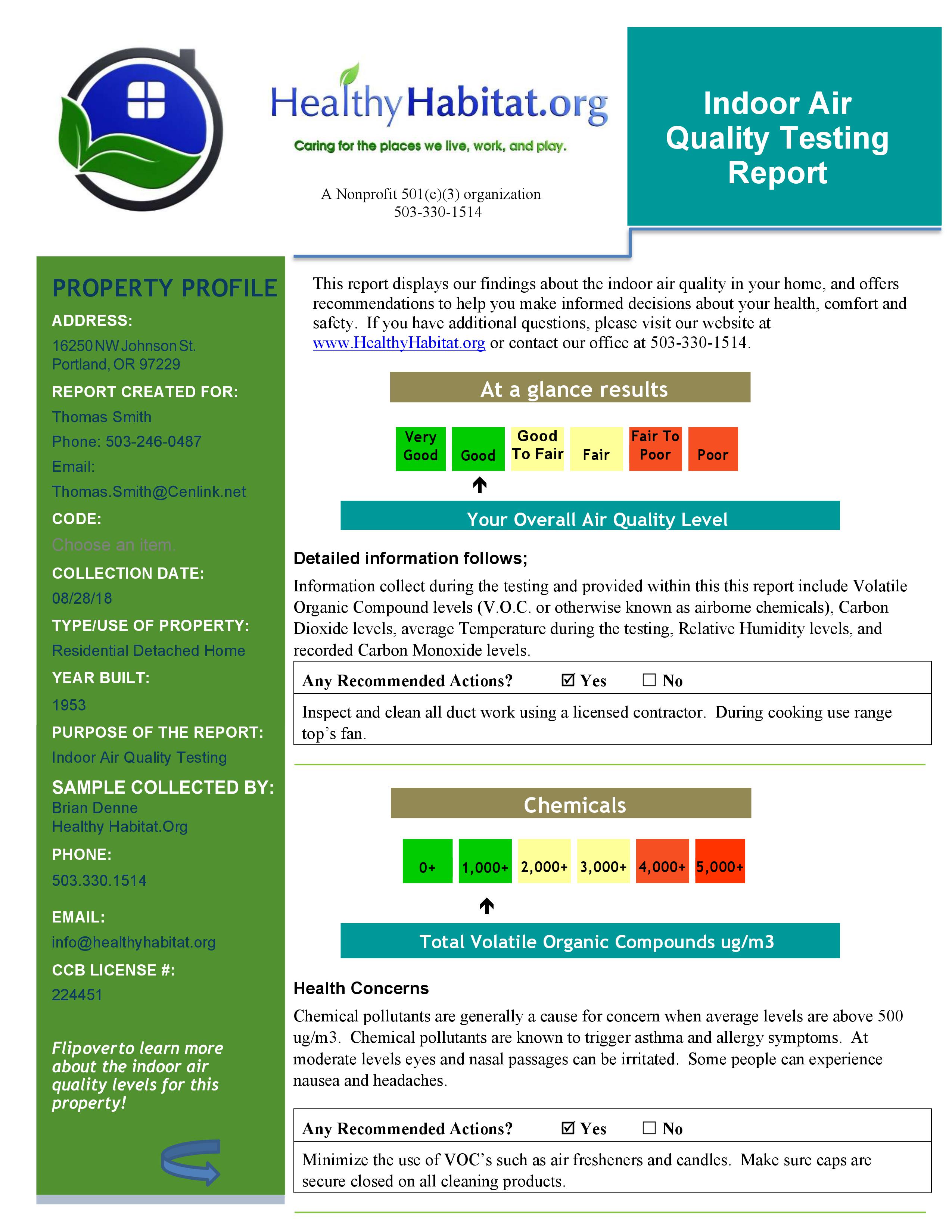Know what you are breathing in
On average Americans spend 90 percent of their time indoors; at home, work, school or other locations. Shouldn’t we know exactly what were are breathing in, and what contaminates we could be eliminating from our indoor air? From asthma and allergy triggering particle to off gassing V.O.C.’s, we measure those items and much more.
A simple one day testing of your home’s, or building’s, indoor air quality can be performed with precision testing result on an easy to read report. The report also contains valuable information regarding what steps to take if the building result show high levels of health harming materials or items that cause personal discomfort.
INDOOR AIR QUALITY TESTING
- Chemicals in micrograms per cubic meter of air
- Particles in microgram per cubic meter of air
- Carbon Monoxide in parts per million
- Carbon Dioxide in parts per million
- Relative Humidity percentage
- Temperature averages
FAQ
Yes, in general most people find that by determining what items are in the air the breathe it allows them to take proper steps to reducing or removing those substances that are Asthma and Allergy related.
Common physical symptoms that are sometimes associated with poor air quality may include:
- Hives
- Fatigue
- Nausea
- Coughing
- Headaches
- Irritated Eyes, throat, or nose
- Wheezing or difficulty breathing
- and more
According to the Environmental Protection Agency, Americans spend up to 90 percent of their time indoors. Common issues to be aware of when considering the indoor air quality of your home include:
- Off gassing of building materials such as carpets, paints, and formaldehyde sealed wood
- Carbon Monoxide release from gas fireplaces, ranges, furnaces, and hot water tanks
- Mold growth due to humidity levels that aid in the spreading of spores
- Chemical cleansers in the home
- and more
Our testing for indoor air quality will provide measurement levels of the following:
- V.O.C.’s (Volatile Organic Chemicals) in micrograms per cubic meter of air
- Airborne Particles in micrograms per cubic meter of air
- Carbon Monoxide in parts per million
- Carbon Dioxide in parts per million
- Relative Humidity as a percentage
- Temperature averages
The report will also provide helpful information on what levels of these materials are safe, and what steps to take if elevated levels are recorded in the building’s indoor air measurements.
Yes, and you have the right to test (and you should should test) any house, or building, before you purchase it. The National Realtors Association of America actually recommends having a Home Inspection prior to purchasing a property. In fact they have even created countless numbers of articles and marketing pieces for distribution to home buyers which Realtors can provide to their clients during the home buying transaction.
For indoor air quality testing our technicians need about 15-30 minutes inside of a property, (based on the overall size of the home and number of testing machines being set up). Testing machine can be picked up from the property by our technicians the following business day, and testing results can be emailed to you that same day as well.
Yes, our team works directly with homeowners, builders/developers, and Realtors. Once your Indoor Air Quality Report is completed we will provide you with detailed results, and any recommended actions to take, as well as provide a copy of the report to your Realtor if you like. We understand that if the home tests positive for elevated levels of poor indoor air quality, and action steps are recommended, your Realtor will need our detailed report to use when negotiating the purchase of the property.
If your home test positive for elevated poor Indoor Air Quality, our report will have recommendation of actions to take. Such steps may include any of the following;
- Install items such as fans, heat recovery systems, heat exchange system, or other devices to increase comfort and safety of the home
- Removal, Reduce, or Secure any of the materials that are causing the poor air quality such as V.O.C.’s and off gassing materials
- Adjust humidity or temperature levels, or airflow volumes, within the property
- Install additional monitoring systems for ongoing reporting of air quality
- and much more
Based on our findings, and recommendations, the choice of how/if you move forward will ultimately be your decision, as the owner of the property.


Add Comment